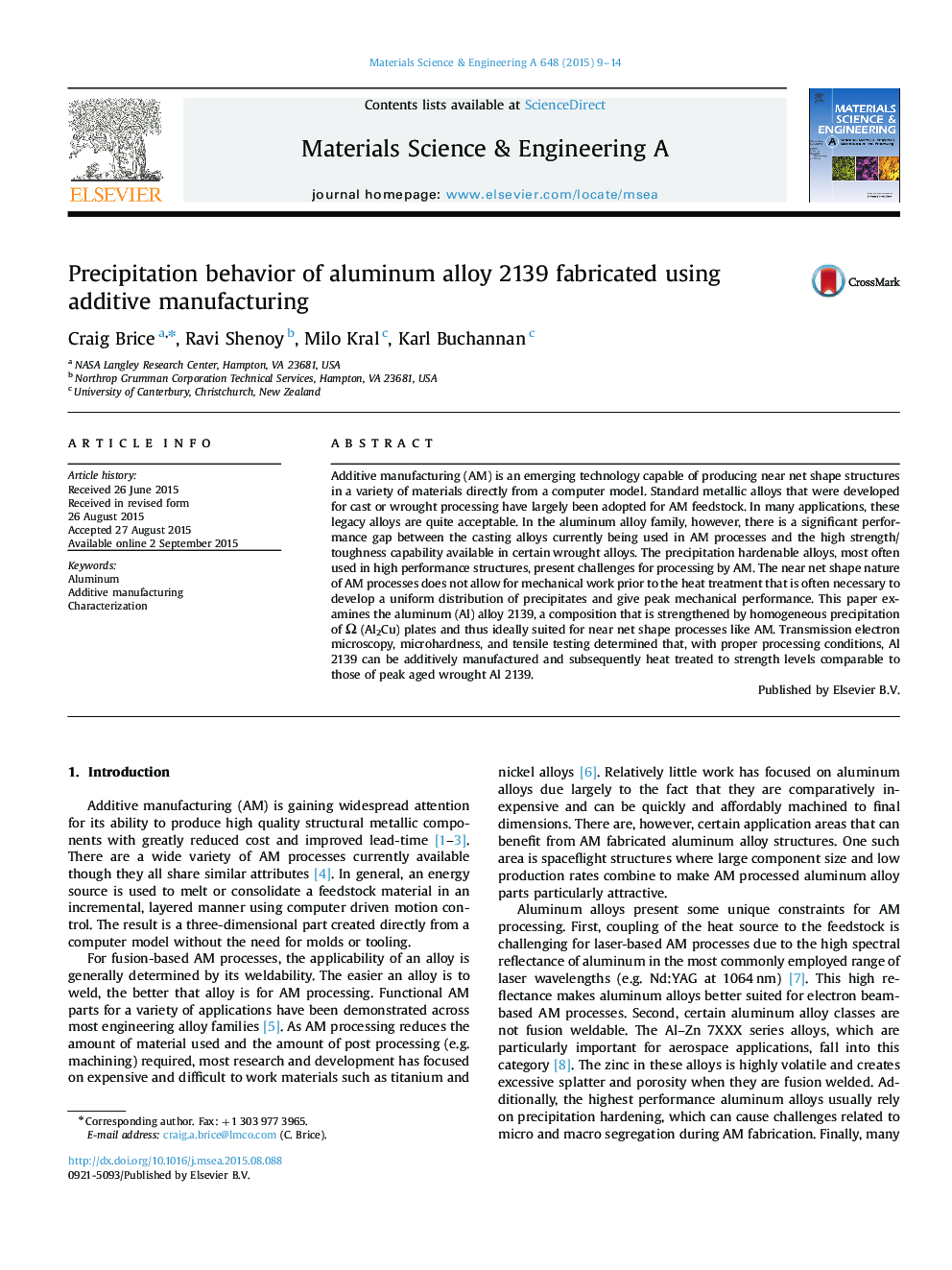| Article ID | Journal | Published Year | Pages | File Type |
|---|---|---|---|---|
| 1573890 | Materials Science and Engineering: A | 2015 | 6 Pages |
Abstract
Additive manufacturing (AM) is an emerging technology capable of producing near net shape structures in a variety of materials directly from a computer model. Standard metallic alloys that were developed for cast or wrought processing have largely been adopted for AM feedstock. In many applications, these legacy alloys are quite acceptable. In the aluminum alloy family, however, there is a significant performance gap between the casting alloys currently being used in AM processes and the high strength/toughness capability available in certain wrought alloys. The precipitation hardenable alloys, most often used in high performance structures, present challenges for processing by AM. The near net shape nature of AM processes does not allow for mechanical work prior to the heat treatment that is often necessary to develop a uniform distribution of precipitates and give peak mechanical performance. This paper examines the aluminum (Al) alloy 2139, a composition that is strengthened by homogeneous precipitation of Ω (Al2Cu) plates and thus ideally suited for near net shape processes like AM. Transmission electron microscopy, microhardness, and tensile testing determined that, with proper processing conditions, Al 2139 can be additively manufactured and subsequently heat treated to strength levels comparable to those of peak aged wrought Al 2139.
Related Topics
Physical Sciences and Engineering
Materials Science
Materials Science (General)
Authors
Craig Brice, Ravi Shenoy, Milo Kral, Karl Buchannan,
